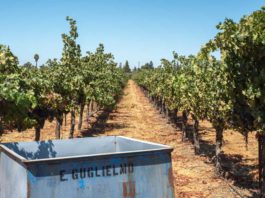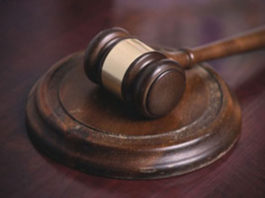Secret Santa Helps, but Many Left in Cold
The number of people living in cars, parks and on the streets has spiked in Gilroy, San Martin and Morgan Hill over the past two years, while at the same time—perhaps not coincidentally—it has dropped in San Jose.
Roland Velasco Wants to Run for Mayor
“No man is an island entire of itself,” begins one of the most famous poems in the English language, its verses asking readers to contemplate the plight of the individual within the context of all humankind.
Black History Month Forgotten?
The Black History Month exhibit in the Gilroy Library kids’ section offers a colorful and robust collection of books on the accomplishments of Americans of African descent.
High Speed Rail and 10th Street Bridge Updates
Gilroy is speeding toward a high speed rail line and a new road and bridge on 10th Street. So far, the roadway is winning.The trains could be rolling in 2024 and environmental impact study of the 110-mph rail line should be finished by the end of 2017, the regional director of the California High Speed Rail Authority told a joint City Council and Gilroy Unified School District meeting on Feb. 8.“I wish that everyone was Gilroy,” said Ben Tripousis, the director, based in San Jose, after hearing comments from the audience about how they hoped the rail line would bring more foot traffic and customers downtown.Tripousis was brought in to let the school board know how the rail line could affect schools, but his answer was that it shouldn’t have any more effect than the current rail line has. The line’s goal is to keep the trains on the rail right-of-way used by Union Pacific, adding a track close by. Between Gilroy and San Francisco, it will use CalTrain tracks.He also said the authority’s goal is to have its opening routes be the ones that will be profitable, most likely San Francisco to Los Angeles and Anaheim. In other places where the fast-moving trains have been built between two cities, air traffic has cut down or gone away entirely, he said. People prefer the convenience of the trains that can take them right to the downtown.“If statewide service moves this way, it’s supposed to create an opportunity for Gilroy to be a hub of its area,” he said. “It’s critical to the region, not just the local community, to ensure high speed rail is an asset, not an eyesore.”He offered some hope for job creation in Gilroy, saying that the authority was considering it as one of two cities for a maintenance yard. The other is Brisbane.Meanwhile, city planners unveiled a plan to build a new $4.5 million bridge on 10th Street over Uvas Creek, something that has been talked about since 2005 and could be completed by 2018. The bridge is needed to accommodate traffic from the 1,700-home Glen Loma development which is covering most of the expenses. It would include a tunnel for the bike trail along the creek and two traffic circles leading to Gilroy High School.Both of those had some controversies. Some said they feared homeless people or high school students would take advantage of the tunnel, which is more of a path under the bridge, than an actual tunnel. Others feared that cars and students crossing the street would have trouble navigating the roundabouts.However, city transportation engineer Henry Servin, said he is a big proponent of the circles and once people understand them, they greatly speed traffic flow.The city also learned that the vacant Jeffrey’s restaurant has been bought by the Hampton Inn, which will open a restaurant there.
Why is Gilroy the last city in the county to ban bags?
Every city in Santa Clara County has a policy banning single-use plastic bags, except Gilroy, which has favored economy over ecology.
Questions for Councilman Daniel Harney
Daniel Harney, 40, was appointed by six City Council members on Jan. 25 to fill the vacancy left when Mayor Don Gage retired and Councilman Perry Woodward filled his seat. He was chosen over seven highly qualified applicants to serve for 10 months. Harney thinks he will run for election to the office for the following four years. He was sworn in and started to serve immediately after being appointed.
Local PR pro takes on a big local development challenge
As the local public relations professional behind the 247-megawatt Panoche Valley solar project and the No on Measure J campaign, which failed to stop a citizen-led effort to ban fracking in San Benito County in 2014, Kristina Chavez Wyatt is no stranger to controversy.
eBay Exec Joins City Council
After what may have been the quickest job interview ever, Daniel J. Harney was selected at Monday’s City Council meeting to fill the seat left vacant following the resignation of former mayor Don Gage.
Gilroy Just Says No to Cannabis
On Monday, Gilroy joined a growing number of jurisdictions across the state that have banned the cultivation of marijuana.In a unanimous vote—with no discussion from the dias or objection from the public—the City Council passed a new zoning ordinance which prohibits the cultivation, processing, delivery and dispensing of marijuana within city limits.The ordinance, which was introduced at a Planning Commission session in December and had its final reading at the council meeting on Monday, makes no distinction between the cultivation of marijuana for commercial and personal use.The state’s Compassionate Use Act of 1996 and Senate Bill 420, known as the Medical Marijuana Program Act (adopted in 2003) allows an individual, a qualified patient, a primary caregiver, or a member of a legal cooperative to possess a specified amount of marijuana with a doctor’s recommendation.In 2010, Gilroy passed an ordinance prohibiting medical marijuana dispensaries.A trio of bills, known as the Medical Marijuana Regulation and Safety Act (MMRSA), was signed into law by Gov. Jerry Brown in October, establishing a regulatory framework and licensing authority for the state’s rapidly growing medical marijuana industry. In response, cities and counties across the state have been scrambling to put their own regulations on the books in order to maintain local control.The rush was prompted in part by a March 1 deadline for local zoning rules that the author of the Assembly bill now says was a mistake.According to the city’s reading of the legislation, under AB 243, “if a local agency does not have an ordinance in effect by March 1, 2016, that either expressly prohibits or expressly regulates the cultivation of medical marijuana, the California Department of Food and Agriculture will be the sole licensing authority for such uses, and may issue such permits for locations within Gilroy.”In a press release, Assemblymember Jim Wood (D-Healdsburg) said, “Nobody intended to give local lawmakers such a short timeline to develop regulations for an industry as complex as medical cannabis.”Wood introduced a bill last week that would remove the March 1 deadline and delete the authorization of local jurisdictions to prohibit the cultivation, storage, manufacture, transport, provision or other activity by patients and caregivers otherwise exempt from state regulation. On Monday, AB 21 as amended passed the state Senate and will go on to the Assembly and then to the governor for his signature. Gov. Brown has said he supports the deadline “fix.”Yet it seems no legislative action can come soon enough to impede the banning trend that is sweeping the state. California Norml, the state’s largest advocacy group pushing for marijuana reform, estimates that nearly 160 jurisdictions have put bans on the books or are considering bans on commercial and/or personal marijuana cultivation.In unincorporated areas of Santa Clara County, commercial cultivation of marijuana is banned. The Patient and Caregiver Medical Marijuana Cultivation Ordinance regulates cultivation by three or fewer qualified patients and primary caregivers for the patient’s personal medical use and prohibits distribution.“There is a wave of communities looking at banning cultivation, which is an unfortunate side effect of regulations,” said Mike Adams, a grower from Nurturing Seed Farms in Mendocino County.Adams was part of a panel discussion on cannabis at the EcoFarm conference in Pacific Grove on Friday. The well-attended panel was the first of its kind for the agricultural conference, which focuses on sustainable, organic and ecological farming techniques.Adams sees the cultivation of cannabis as an opportunity for small-scale farmers to bolster their revenue and gird them from the risk of operating a small farm. He said that with small-scale farming you are “basically taking a vow of poverty.”Calling cannabis the “number one cash crop,” Adams said in his eight years in California he can confidently say that cannabis growers are doing financially better than those growing kale.Yet, with the trend of cultivation bans sweeping the state, it is hard to predict how things will pan out for people interested in growing cannabis.Since 2004, when SB 420 established the medical marijuana program in the state, a patchwork of municipal ordinances has popped up as local jurisdictions attempted to address key issues like land use and public safety. Most ordinances dealt primarily with dispensaries and brick and mortar stores, not cultivation.All that changed with the signing of MMRSA. While most of the provisions of the law do not fully take effect until 2018, the rush by local jurisdictions to put their own regulations on the books has left growers, industry watchers and patient advocates in a state of shock.In an open memo to local governments, medical marijuana patient advocacy group, Americans for Safe Access, stated that banning the personal and commercial cultivation of medical cannabis since the adoption of the MMRSA is “an unnecessary step that is harmful to patients and may deprive the cities and counties of the proven benefits of regulation: reduced crime, fewer complaints, greater clarity for all stakeholders (especially law enforcement), tax revenue, and more.”Researchers from cannabis industry investment firm The ArcView Group found that the U.S. market for legal cannabis grew 74 percent in 2014 to $2.7 billion, up from $1.5 billion in 2013. According to the Washington Post, the cannabis industry will be worth $35 billion by 2020.
Gilroy Selects “Gen X” eBay Manager for City Council
Four-year Gilroy resident and eBay executive, Daniel J. Harney, was selected to fill the city council seat left vacant by the resignation of former Mayor Don Gage in December at tonight’s city council meeting. After nearly two hours of discussion with questions from the council and comments from the public, Harney received the four votes needed from the six-member council to beat out the other seven applicants to garner his place on the dais. He beat seven other applicants. An eighth, Harvard-educated lawyer, James Foy, dropped out of the running. Harney will serve out the 10-months left of Gage’s term. During his interview in front of the council, Harney said he and his wife, who is a nurse at Lucile Packard Children’s Hospital in Palo Alto, moved to Gilroy from Morgan Hill in 2011 with their children in part because of the city’s “sense of heritage” and focus on “smart growth.” When he lived in Morgan Hill, Harney served on the Board of Directors for the homeowners association of Creekside Village. When asked by Councilmember, Dion Bracco what sets him apart from the other applicants, Harney said he had a vision for Gilroy that he believes is shared by a lot of new people coming into the city and as a “Gen-Xer” has a strong connection with the rising “millennial” demographic. He wants to see a vibrant downtown with a variety of things to do.As a member of the city council, Harney will have to serve on a number of committees and commissions. He said he would like to serve on the VTA or transportation committees.Harney said his primary goals during his short term on the council is to work with his fellow council members to fill leadership positions in city hall, including a new city administrator and to make budget expenditure decisions.Harney said he intends to run for a permanent seat on the council during November elections.After receiving the oath, Harney took his place on the dais for his first action as council member. In a unanimous vote, Council member Peter Leroe-Munoz was selected as Mayor Pro Tempore.
















